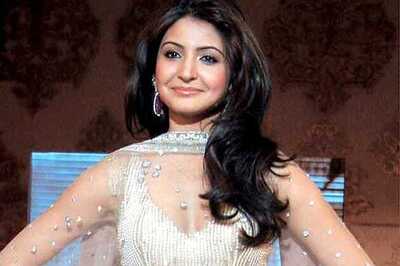
views
Her tryst with dance began at the age of four. However, renowned dancer Dr Padmaja Suresh believes that it was carried forward from her last birth. Belonging to a family of gifted artistes including her maternal great granddad Kalamandalam Maddalam VengichaSwamy and father Chakyar Koothu Rajan, dance came naturally to her.
She has also founded Kalpataru Kala Vihar (Aatmalaya), which conducts training in dance. The trust has a separate section which involves imparting training, mostly free or to the barest minimum, to those who deserve to learn but cannot afford fees. This includes city slum dwellers and rural children.
“We have reached across to over 1,500 children since 2004-2005 in introducing them to the basic tenets of classical dance, training them at government schools ,corporation school premises and at our centre. Out of these, many have continued their interest by using the skills in their work places now, some are teaching dance as well,” said Dr Padmaja who is among the few Bharatanatyam dancers in the country who has completed her Ph.D.
At present, the trust is focusing on a few girls who have learnt the art well and have expressed a desire to do an arangetram next year. However, their challenging living conditions have to be coped with and their practice sessions limited to when they have to concentrate on work along with studies.
“When one of them offers a flower out of sheer love, I feel that I have glimpsed the Lord and when another holds a crumpled ten rupee note with some shame , I hug the child and assure him or her that he has to be proud of whatever the Lord has given him. I was fortunate enough to have opportunities to perform and teach workshops at Leh for children who were orphaned after the cloud burst and at Bilaspur for Adivasi tribes,” said the dancer who also felt that art can enhance social development if made more inclusive.
Impressing Dr A P J Kalam with her dance performances: The wards of Kalpataru Kalavihar (Aatmalaya) had the unique opportunity to perform before the ex-president of India, Dr A P J Abdul Kalam at the Rashtrapati Bhavan on October 27, 2006.
The dancer confessed that Dr Kalam was a luminous figure and he also bonded with the students. Most of them were blown away by his inimitable style and sense of humour. “He particularly enjoyed the dance of Tiruvalluvar poetry by me and Krishna Leela by the students. It was dream come true for all of us,” she added.
Emulating a new identity in dance
“I cite the example of Kannapa Nayanar, an untouchable devout hunter, who offered his eyes to Shivalingam overtaken by deep feelings of love and devotion, that I recently performed. I usually sit with the musicians to set the music with a rough framework of the actions and after two rehearsals, I discover various ways to enact the role, trying out what would connect with the audience and make it comprehensive as well as emotionally touching. During the final performance, I still experiment with manodharma, feeling the vibrations and experiencing the entire event as my own and many a times, the audience is moved to tears,” said the dancer.
About her repertoire
The dancer enjoys performing brisk Nritta with a variety of steps, thanks to her mentor Guru K Kalyanasundaram. Her style usually has permutations and combinations of Panchanadais especially and off-beat tapping, which is typical of her school. She has also explored several devotional Kritis and esoteric themes like the yogic Chakras with potent Mantras like Lalitasahasranama.
Her repertoire contains comparatively less of Sringara pieces usually. However, she finds certain Nayika Bhavas extremely interesting to portray.
“I like to ask my students if they prefer something in particular. The seniors come with specific requests and while the choreography is on, it is a thrill to surrender to the higher will,” she said.




















Comments
0 comment